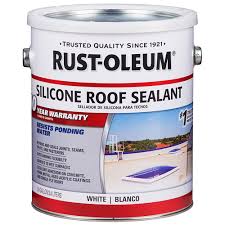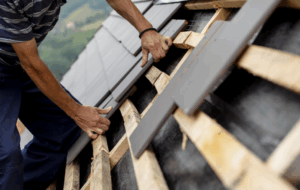When it comes to protecting your home, the roof is your first line of defense against rain, wind, heat, and snow. Over time, even the best roofing materials can develop minor cracks or wear that lead to leaks and structural issues. That’s where roof sealant comes in. Whether you’re patching up an older roof or adding an extra layer of protection to a new one, roof sealant is an affordable and effective way to extend the life of your roof.
In this comprehensive blog post from Roofing Advice, we’ll break down what roof sealant is, the different types available, when and how to use it, and tips for choosing the right one for your specific roofing needs.
What Is Roof Sealant?
Roof sealant is a protective coating applied to the surface of a roof to help waterproof and shield it from the elements. It can be used to seal leaks, fill cracks, and even restore some of the roof’s aesthetic appeal. Roof sealant is especially useful for preventing water infiltration, which can cause expensive damage to your attic, insulation, and interior walls.
Think of it as sunscreen for your roof—providing a barrier against UV rays, extreme weather, and moisture that can break down roofing materials over time.
Benefits of Using Roof Sealant
Using roof sealant offers multiple benefits, both short-term and long-term. Here are some of the top reasons homeowners and contractors rely on roof sealant:
1. Leak Prevention
Roof sealants are primarily designed to stop leaks. Even tiny gaps or pinholes in shingles or flashing can let in water, leading to costly damage.
2. Extended Roof Life
By sealing cracks and creating a barrier against sun and weather, roof sealant helps extend the overall life of your roof.
3. Improved Energy Efficiency
Some reflective sealants can reduce the amount of heat absorbed by your roof, lowering indoor temperatures and decreasing your energy bills.
4. Cost-Effective Maintenance
Compared to a full roof replacement, applying a roof sealant is relatively inexpensive and can be done as part of regular maintenance.
5. Versatility
Roof sealant can be used on many roof types including metal, asphalt shingles, EPDM (rubber), and more.
Types of Roof Sealant
Not all roof sealants are created equal. Different types are designed for different roofing materials and weather conditions. Understanding the most common types can help you choose the right one for your project.
1. Silicone Roof Sealant
Silicone sealants are among the most durable and weather-resistant. They’re excellent at withstanding UV rays, rain, and temperature fluctuations. Silicone remains flexible after drying, which helps it move with the roof’s natural expansion and contraction.
Best for: Flat roofs, metal roofs, and areas with extreme weather conditions.
2. Acrylic Roof Sealant
Acrylic sealants are water-based and relatively easy to apply. They’re ideal for sloped roofs and provide good protection from UV rays, though they may not perform as well in ponding water conditions.
Best for: Asphalt roofs, built-up roofs (BUR), and sloped surfaces.
3. Polyurethane Roof Sealant
This type is highly resistant to impact and mechanical stress. It provides excellent adhesion and is more abrasion-resistant than silicone or acrylic sealants.
Best for: Flat roofs with foot traffic or mechanical equipment.
4. Bitumen-Based Roof Sealant
Often used on commercial buildings, bitumen-based sealants are compatible with asphalt roofing and offer a thick, tar-like consistency.
Best for: Asphalt roll roofs and older roofs needing a strong waterproofing layer.
When Should You Use Roof Sealant?
Timing is everything when it comes to roof sealant. Here are a few signs and scenarios where applying a sealant is the right move:
-
After roof repairs – to provide a watertight finish.
-
To stop leaks – especially if you notice water stains on ceilings or attic dampness.
-
As part of preventative maintenance – applying sealant every few years can delay the need for expensive repairs.
-
Before rainy seasons – a fresh coat of sealant can help your roof withstand heavy rains.
-
When roof materials show signs of wear – such as small cracks, curling shingles, or minor punctures.
How to Apply Roof Sealant
If you’re a DIY enthusiast or just want to understand the process better before hiring a pro, here’s a general guide to applying roof sealant.
Tools & Materials Needed:
-
Roof sealant (appropriate for your roof type)
-
Paint roller or brush
-
Caulking gun (for specific crack filling)
-
Cleaning supplies (broom, pressure washer)
-
Safety gear (gloves, eye protection, non-slip shoes)
Step-by-Step Process:
-
Clean the Roof Surface
Remove dirt, debris, and mildew. A clean surface ensures proper adhesion of the roof sealant. -
Inspect and Repair
Fix any major issues like broken shingles or rusted flashing before applying sealant. -
Apply the Sealant
Use a roller for large, flat areas or a brush for tighter spaces. If sealing cracks, use a caulking gun to inject the product directly. -
Allow to Cure
Most sealants require 24–48 hours to fully cure. Avoid rain or moisture during this period. -
Inspect Your Work
Once dry, inspect the sealant layer for coverage and touch up if necessary.
Tips for Choosing the Right Roof Sealant
When shopping for roof sealant, keep these considerations in mind:
-
Compatibility: Make sure the sealant works with your roof’s material.
-
Climate Resistance: Choose a product suited for your local weather—especially UV exposure, rain, or snow.
-
Ease of Application: Some sealants are ready-to-use, while others require mixing or special tools.
-
Reflectivity: For hotter climates, reflective (cool roof) sealants can help reduce heat buildup.
-
Warranty and Longevity: Look for brands offering extended warranties and proven performance.
Roof Sealant FAQs
Q: How long does roof sealant last?
A: Depending on the type and brand, most roof sealants last 5–10 years. Silicone tends to last the longest.
Q: Can I apply roof sealant over shingles?
A: Yes, but make sure it’s a compatible product and that the surface is clean and dry.
Q: Is roof sealant a permanent fix for leaks?
A: It’s a strong solution for minor leaks and cracks, but extensive damage may still require professional repair or replacement.
Conclusion: Is Roof Sealant Worth It?
Absolutely. Whether you’re looking to stop a pesky leak or prolong the life of your roofing system, roof sealant is a wise investment. It offers waterproof protection, enhances energy efficiency, and can save you thousands in future repairs. Just be sure to choose the right type for your roof and climate, and apply it correctly for the best results.
At Roofing Advice, we recommend including roof sealant in your regular maintenance routine to ensure your home stays dry, safe, and energy-efficient. For more expert tips on roofing products and repairs, be sure to check out our other blog posts!






